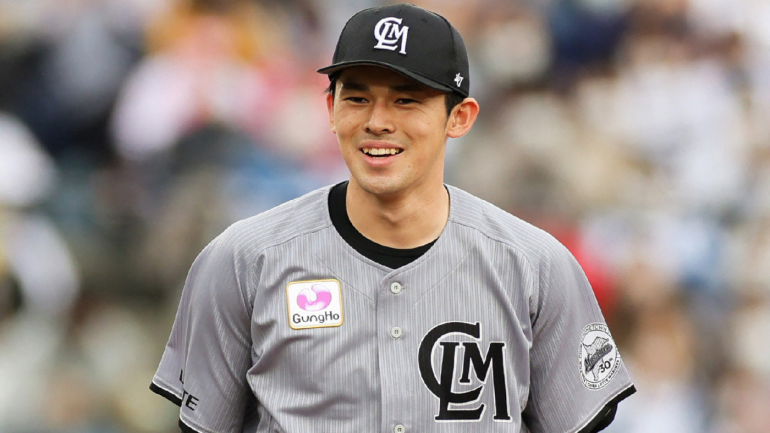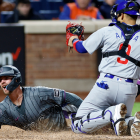
Japanese phenom Roki Sasaki's run of perfection came to an end on the first pitch he threw Sunday. Sasaki, a 20-year-old right-hander for the Chiba Lotte Marines, had retired a record 52 consecutive batters before Orix Buffaloes outfielder Shuhei Fukuda shot a base hit to right field to begin Sunday's game.
Sasaki struck out 19 in Japan's first perfect game in 28 years two weeks ago. He followed that up with eight perfect innings in his start last week. Sasaki went into Sunday's game with a 1.16 ERA and 56 strikeouts in 31 innings on the season.
Overall, Sasaki was mortal Sunday, allowing two earned runs on six hits and three walks in five innings. He also hit two batters and struck out four, and got some help when outfielder Akito Takabe threw a runner out at the plate in the first inning. Sasaki was good enough to get the win in Sunday's game.
Rōki Sasaki had pitched 17 consecutive PERFECT INNINGS & retired an incredible 52 batters in a row! 🔥
— Baseball Brit (@BaseballBrit) April 24, 2022
He gave up a hit with the first pitch of his start today... pic.twitter.com/8tJrdwcfJs
"I worked my absolute hardest to throw strikes the whole day," Sasaki told the Kyodo news after Sunday's game. "I got into a lot of tough spots, but even with my poor command I managed to go five innings without letting them take the lead."
Armed with a triple-digit fastball and a devastating splitter, Sasaki is arguably the best pitcher in the world not employed by an MLB team. Our R.J. Anderson recently provided a scouting report:
According to data obtained by CBS Sports from Sunday's start, Sasaki's fastball averaged better than 99.5 mph and featured 19.8 inches of induced vertical break and 15.4 inches of horizontal break. That's an elite, unmatched combination.
...
Sasaki's splitter checks in at 91.2 mph with 2.30 inches of induced vertical break and 7.80 inches of horizontal break. That velocity would rank as the second fastest, trailing only Hirokazu Sawamura of the Boston Red Sox. Sasaki's break numbers, meanwhile, compare most favorably to those of Blake Parker (2.9, 7.40). Parker's splitter last season generated a 36 percent whiff rate and a .232 average against.
When -- and if -- Sasaki will come over to MLB is unknown. He must accrue nine years of service time to be eligible for international free agency, and while he could request the Marines post him for MLB teams earlier than that, they are not obligated to do so. The Marines have posted only one player in their history: infielder Tsuyoshi Nishioka, who signed with the Minnesota Twins in 2010.
Even if the Marines do post Sasaki, MLB's international free-agent system would subject him to the bonus pools, limiting his earning potential (the largest bonus pools are in the $6 million to $7 million range each year). Sasaki will have to wait until he's 25 to avoid the bonus pools. An international draft, which is being discussed, would limit his options and earning potential even further.
The best opportunity for MLB fans to see Sasaki will be next spring's World Baseball Classic. The tournament will return next year and Japan typically takes its very best pro players to the event. Sasaki is, obviously, one of the best pitchers in his league.






















